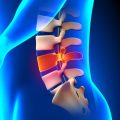Introduction
Falls among older adults are a significant public health concern in the United Kingdom, impacting not only individuals but also families and the wider healthcare system. Statistics from the NHS and Public Health England reveal that approximately one in three adults over the age of 65 will experience at least one fall each year, with this rate increasing to one in two for those aged 80 and above. These incidents often result in serious injuries such as hip fractures, head trauma, or long-term disability, contributing to increased hospital admissions and social care needs. Beyond the physical consequences, falls can have profound psychological effects, including loss of confidence and increased fear of falling, which may lead to reduced independence and isolation. The British context presents its own challenges: the UK’s ageing population, variable weather conditions, housing stock with stairs or uneven surfaces, and differences in access to community resources all play a role in shaping fall risk. As such, understanding the landscape of falls within British society is essential for developing effective prevention strategies tailored to local needs. This overview sets the stage for exploring how physiotherapy can make a meaningful difference in reducing falls among older adults across the UK.
2. Understanding the Causes of Falls in Older Adults
To effectively prevent falls among older adults in the UK, it is essential to first understand why they occur. Falls are rarely caused by a single factor; instead, they typically result from a complex interplay between intrinsic and extrinsic risk factors. These factors are influenced by individual health conditions, environmental settings, and lifestyle habits common within the UK context.
Intrinsic Risk Factors
Intrinsic factors are those that originate from within the individual. In the UK, the prevalence of chronic health conditions such as arthritis, diabetes, and cardiovascular disease increases with age and can significantly impact balance and mobility. Additionally, cognitive impairments like dementia or mild cognitive decline further heighten fall risk. Age-related changes such as reduced muscle strength, impaired vision (including untreated cataracts), and side effects from medications—especially polypharmacy—are also notable contributors. The table below summarises key intrinsic risk factors relevant to older adults in the UK:
| Intrinsic Factor | Description | UK Context Example |
|---|---|---|
| Chronic Health Conditions | Long-term illnesses affecting balance, strength, or cognition | High rates of arthritis and diabetes among older population |
| Medication Use | Side effects such as dizziness or hypotension from multiple prescriptions | NHS reports high levels of polypharmacy in care homes |
| Sensory Impairments | Poor vision or hearing impacting spatial awareness | Delayed access to eye care services in rural areas |
| Reduced Muscle Strength & Balance | Sarcopenia and inactivity leading to frailty | Inactivity during winter months due to weather |
Extrinsic Risk Factors
Extrinsic factors are external elements related to an individuals environment or activities. In the UK, many older adults live in homes not originally designed with accessibility in mind—narrow stairs, loose carpets, inadequate lighting, and cluttered spaces all increase the likelihood of falls. Outdoor hazards such as uneven pavements, wet leaves, and icy footpaths are common environmental risks during British winters. Furthermore, lifestyle habits—like insufficient physical activity or reluctance to use walking aids—can compound these dangers.
| Extrinsic Factor | Description | UK Context Example |
|---|---|---|
| Poor Lighting & Home Hazards | Lack of adequate lighting; trip hazards like rugs or pets in walkways | Victorian-era homes with steep staircases and limited natural light |
| Outdoor Environmental Risks | Slippery surfaces from rain or ice; uneven paving slabs on footpaths | Icy conditions during winter months across England and Scotland |
| Lifestyle Factors | Sedentary behaviour; not using assistive devices when needed | Cultural reluctance to adopt walking frames despite NHS advice |
| Lack of Community Support & Social Isolation | Limited engagement with local groups or support networks increasing inactivity and frailty risk | Elderly living alone in rural villages without regular transport links |
Tackling the Multi-Factorial Nature of Falls in the UK Setting
The evidence highlights that fall prevention must address both intrinsic and extrinsic risks tailored to the unique health profiles and living environments found across the UK. Physiotherapists play a critical role in assessing these risk factors holistically and devising targeted interventions to mitigate them effectively.
![]()
3. Physiotherapy Strategies for Fall Prevention
Physiotherapy plays a pivotal role in fall prevention among older adults in the UK by employing a range of targeted strategies. Central to these interventions are approaches that focus on improving strength and balance, as these physical attributes are closely linked to reduced fall risk. Physiotherapists often conduct thorough assessments to identify specific weaknesses or imbalances before recommending suitable exercises.
Strength and Balance Training
One of the cornerstones of physiotherapy-led fall prevention is strength and balance training. Exercises might include resistance training using bands or weights, as well as functional movements like sit-to-stand repetitions and step-ups. Balance work often encompasses activities such as standing on one leg or practicing tandem walking. These interventions are grounded in evidence and have been widely adopted across NHS community falls services, with regular reviews ensuring they remain both safe and effective for each individual.
Tailored Exercise Programmes
Recognising the diverse needs of older adults, physiotherapists in the UK commonly develop bespoke exercise programmes. These are carefully tailored to each person’s baseline abilities, health status, and personal goals. For example, some may benefit from group-based classes like Otago or FaME (Falls Management Exercise), while others require home-based routines with ongoing professional support. Such personalisation ensures that exercises remain engaging and achievable, which is vital for long-term adherence.
The Importance of Gradual Progression
A crucial principle underpinning all physiotherapy strategies is gradual progression. Older adults are encouraged to start with manageable levels of activity, increasing intensity or complexity only when it is safe to do so. This approach not only reduces the risk of injury but also helps build confidence—a key factor in reducing fear of falling and supporting independence. Physiotherapists routinely monitor progress and make adjustments as needed, fostering a supportive environment that empowers individuals to take an active role in their own care.
4. Evidence-Based Outcomes in the UK
The effectiveness of physiotherapy in fall prevention for older adults is strongly supported by evidence-based research, national guidelines, and statistical data from across the UK. Several key studies and reports have shaped current clinical practice, most notably those referenced by the National Institute for Health and Care Excellence (NICE).
Current Research Landscape
Recent UK-based research consistently highlights the positive impact of tailored physiotherapy programmes on reducing both the incidence and severity of falls among older people. Randomised controlled trials (RCTs) have shown that interventions focusing on strength, balance, and functional mobility training can reduce falls by up to 30%. Furthermore, systematic reviews suggest that multi-component physiotherapy interventions outperform single-exercise approaches.
Guidelines and Best Practices
NICE guideline NG21 recommends multifactorial risk assessments followed by targeted interventions, with physiotherapists playing a central role. The guidance specifically advocates for individually prescribed exercise regimens—particularly those including strength and balance components—for all community-dwelling adults aged 65 and over who are at risk of falling. Implementation of these guidelines has become standard practice within NHS falls services.
Key Statistics: Impact of Physiotherapy Interventions
| Outcome Measure | Pre-Intervention | Post-Intervention | Source |
|---|---|---|---|
| Annual fall rate per 1,000 older adults | 320 | 220 | NHS Digital, 2022 |
| Hospital admissions due to falls (%) | 14% | 9% | PHE Report, 2021 |
| Self-reported confidence in mobility (Likert scale) | 2.8/5 | 4.1/5 | CSP Study, 2020 |
This evidence underscores the critical role of physiotherapy-led interventions in significantly reducing fall rates, hospital admissions, and improving self-confidence among older adults living in the UK. The integration of these findings into routine practice not only aligns with national standards but also ensures that care is both effective and locally relevant.
5. Collaboration and Community Involvement
Multidisciplinary teamwork is fundamental to effective fall prevention for older adults in the UK. Physiotherapists often work hand-in-hand with NHS professionals, including occupational therapists, GPs, nurses, and social workers. This collaborative approach ensures that each individuals needs are thoroughly assessed and addressed from multiple perspectives, enhancing safety and independence at home and within the community.
Close collaboration with carers—both informal family members and professional care staff—is equally essential. Physiotherapists provide carers with tailored education on safe mobility techniques, practical advice on managing daily activities, and strategies to identify early signs of increased fall risk. These partnerships empower carers to play an active role in maintaining a safer environment for older people.
Local community initiatives also make a substantial difference. Across the UK, various local councils, charities, and voluntary groups run exercise classes, home hazard assessment schemes, and public awareness campaigns designed to reduce falls among older residents. Physiotherapists frequently contribute their expertise to these programmes by leading group sessions or offering professional guidance on best practices.
This collaborative framework—encompassing the NHS, carers, and community organisations—helps to ensure that fall prevention is not just a clinical intervention but an integrated element of everyday life for older adults in Britain. By fostering communication and shared responsibility among all stakeholders, we can create safer environments where older people feel supported and confident in their mobility.
6. Barriers and Opportunities
Accessing physiotherapy services for fall prevention is not always straightforward for older adults in the UK. Several obstacles persist, ranging from logistical to social and economic factors. Understanding these barriers is critical for developing practical interventions that can improve both reach and effectiveness.
Common Barriers to Access
One of the most prominent issues is limited mobility, which can make attending clinic-based sessions challenging. Additionally, long NHS waiting lists often delay timely intervention. There may also be a lack of awareness about the availability or benefits of physiotherapy among older people and their families. Socio-economic constraints, such as transport costs or digital exclusion, further compound these difficulties—especially for those living in rural or deprived areas.
Cultural and Social Factors
Stigma around ageing and frailty can discourage individuals from seeking help, with some viewing falls as an inevitable part of getting older rather than something preventable. Language barriers and health literacy gaps may also prevent some groups within the UK’s diverse population from accessing appropriate advice or services.
Opportunities for Improvement
To overcome these barriers, a multi-faceted approach is needed. Outreach programmes in community centres or through local councils can bring services closer to those in need. Innovations such as telehealth consultations have shown promise in reducing travel requirements and improving access, though they must be paired with support for digital inclusion. Raising public awareness through targeted campaigns can help address stigma and encourage early engagement with physiotherapy. Cross-sector collaboration between NHS trusts, social care providers, and voluntary organisations could streamline referrals and expand service capacity.
Ultimately, addressing these challenges requires both systemic change and local adaptation to ensure that all older adults across the UK have equitable access to effective physiotherapy-led fall prevention strategies.
7. Conclusion and Recommendations
Physiotherapy has demonstrated a significant impact on fall prevention for older adults across the UK, addressing both physical and psychological contributors to falls. Through evidence-based assessments and tailored interventions, physiotherapists play a pivotal role in reducing fall incidence, improving functional independence, and enhancing quality of life among older people. The collaborative approach seen in UK healthcare—linking NHS services, local authorities, and community organisations—further strengthens the reach and effectiveness of physiotherapy-led initiatives.
Summary of Physiotherapy’s Impact
Key benefits observed include improved balance, strength, and confidence, alongside reduced hospital admissions due to falls. Programmes such as Otago and Falls Management Exercise (FaME) have been successfully implemented in various regions, reflecting best practice in the UK context. Importantly, physiotherapists are equipped to identify individual risk factors and deliver person-centred care, ensuring interventions are relevant to each older adult’s needs and environment.
Practical Recommendations for Practitioners
- Conduct comprehensive fall risk assessments using validated tools recommended by NICE guidelines.
- Integrate strength and balance training into routine care plans for older adults at risk.
- Engage with multidisciplinary teams—including occupational therapists and GPs—to address multifactorial risks.
- Provide education to patients and carers on home safety modifications and appropriate use of mobility aids.
Guidance for Policy Makers
- Continue funding community-based falls prevention programmes, ensuring equitable access across urban and rural areas.
- Promote public awareness campaigns highlighting the importance of physiotherapy in healthy ageing.
- Support ongoing professional development for physiotherapists specialising in geriatrics and falls prevention.
Advice for Families and Carers
- Encourage regular participation in local exercise groups designed for older people.
- Create safer living environments by addressing trip hazards and improving lighting at home.
- Liaise with healthcare professionals if there are concerns about mobility or recent falls.
Towards a Safer Future
A collective effort is needed to continue reducing falls among the UK’s ageing population. By harnessing the expertise of physiotherapists, supporting research-informed policy, and empowering families to be proactive, we can make substantial strides towards safer, healthier later years for all.


